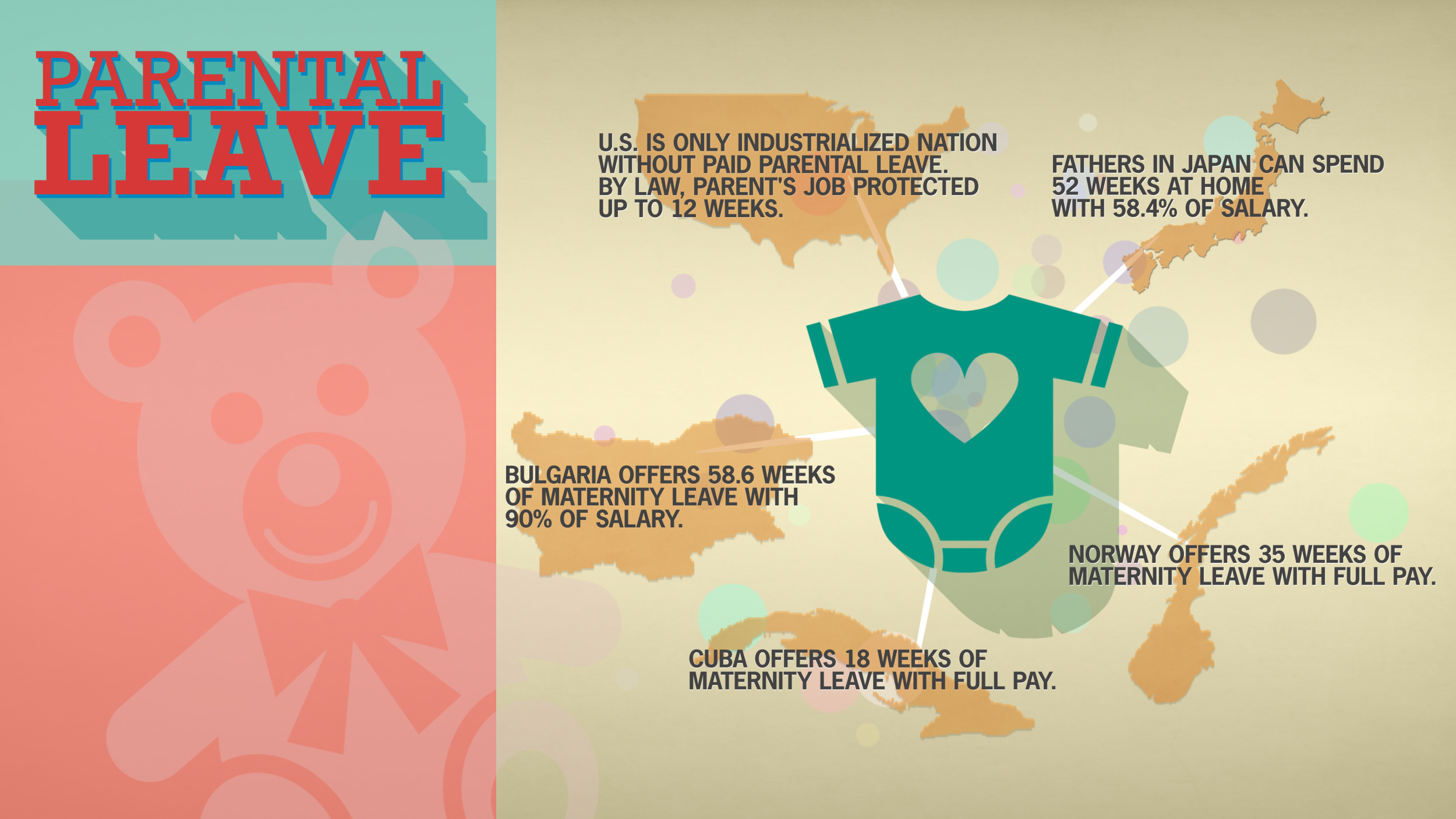So, what is maternity leave and how does it differ from parental leave? Truly, there isn’t too much of a difference. Maternity leave allows working women to get time off of work after giving birth without losing their jobs. Parental leave is a phrase that acknowledges that there might be fathers who also want some quality time with newborn and new mama.
Now, where the United States is lacking compared to other countries is in paternity leave, length of maternity and paternity leave, as well as having this leave paid! The United States currently offers zero (yes, zero) weeks of paid maternity leave. So, while mama might get 2 weeks of of work to care for her new bundle of joy, there won’t be an income.
Check out this chart from NPR comparing maternity leave in various countries:

It is quite easy to see that the United States is way behind compared to other countries. Countries that we normally compare ourselves to economically. The article goes on to discuss possible reasons for the lack of paid maternity leave in the United States, including our business ideology.
Businesses are not opposed to paid leave itself; 65 percent of U.S. civilian workers have paid sick leave, and 74 percent have paid vacation, according to the Labor Department. (The numbers are, however, slimmer for paid family leave — only 12 percent of private sector workers have access to that.)
But those in the business community say they’re opposed to the government telling businesses how to institute those policies. Paid leave is expensive, they argue, and businesses should all be able to figure it out on their own.
Most of the time when we hear maternity, paternity, or parental leave, it is talked about as a women’s issue–allow women to stay in the workplace! But, it is truly so much more than a women’s issue…even President Obama agrees.
The percentage of women in the labor force in the United States is declining, even as it continues to rise in other high-income countries. A main reason is that policies that make it possible for parents to work have not kept pace with changing family structures in the United States, while other countries provide working families with more support.
With the United States wanting to be a top competitor in the international community, it is important that we keep our economy strong. This means keeping women in our workforce! More support for our families simply means an easier balance between work life and family life–leading to happier workers and improved economic benefit!
We want our pebbles to know that they are supported not only by their communities, but by their country, as well. The United States needs to show working mothers that they are an important contributing factor in our economy. We are preparing our girls to be successful in the workforce, and we want them to be able to stay there if they choose to start a family!


